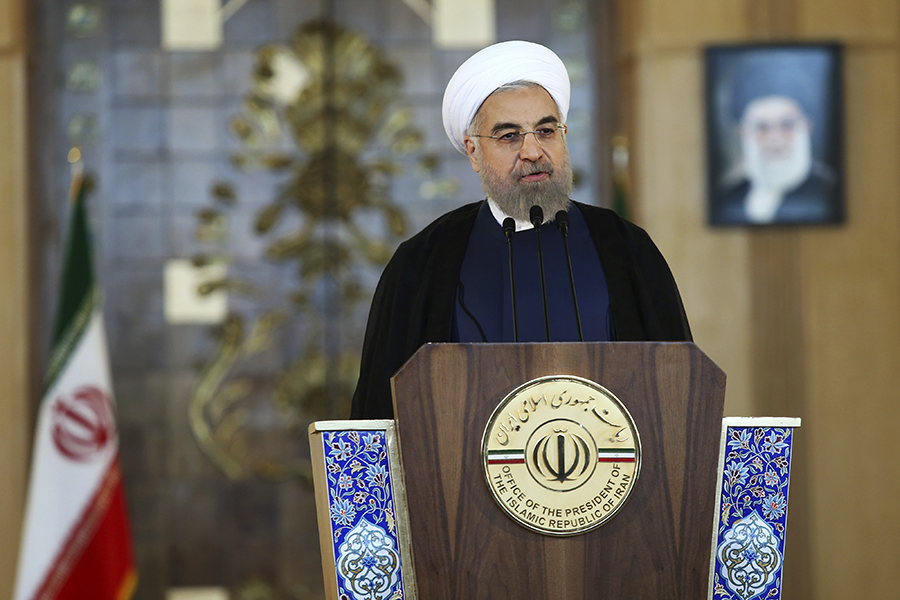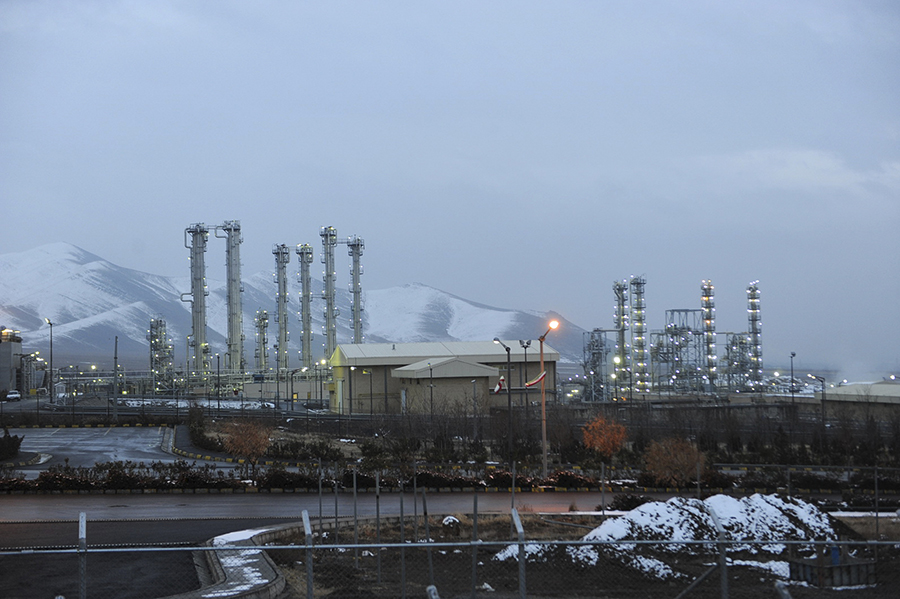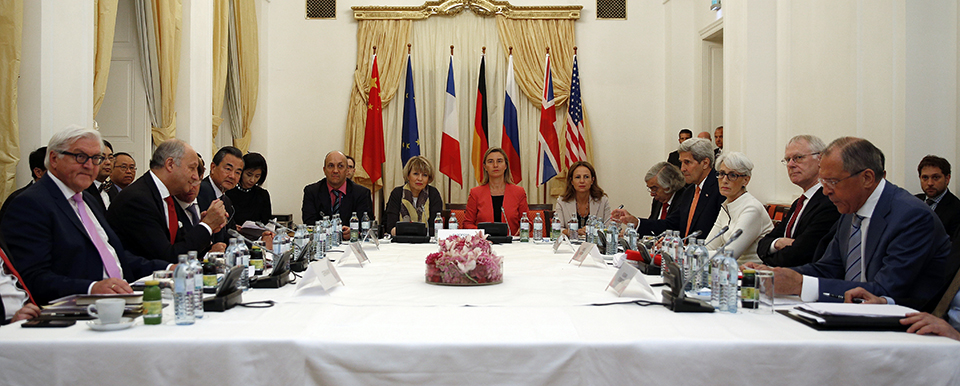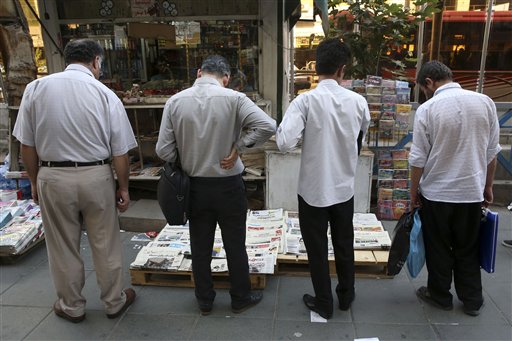A comprehensive agreement on Iran’s nuclear program was finally made between Iran and Britain, China, France, Germany, Russia and the United States after more than two weeks of bargain in the Austrian capital city. Read key points of the Joint Comprehensive Plan of Action from the White House.
(Read the full text of the deal below)
Preamble and General Provisions
* The full implementation of this JCPOA will ensure the exclusively peaceful nature of Iran’s nuclear program.
* Iran reaffirms that under no circumstances will Iran ever seek, develop, or acquire any nuclear weapons.
* This JCPOA will produce the comprehensive lifting of all UN Security Council sanctions as well as multilateral and national sanctions related to Iran’s nuclear program.
* A Joint Commission consisting of the E3/EU+3 and Iran will be established to monitor the implementation of this JCPOA and will carry out the functions provided for in this JCPOA.
* The IAEA will be requested to monitor and verify the voluntary nuclear-related measures as detailed in this JCPOA. The IAEA will be requested to provide regular updates to the Board of Governors, and as provided for in this JCPOA, to the UN Security Council.
* The E3+3 will submit a draft resolution to the UN Security Council endorsing this JCPOA affirming that conclusion of this JCPOA marks a fundamental shift in its consideration of this issue and expressing its desire to build a new relationship with Iran.

Iran’s President Hassan Rouhani addresses the nation in a televised speech after a nuclear agreement was announced in Vienna, in Tehran, Iran, Tuesday, July 14, 2015. (AP Photo/Ebrahim Noroozi)
Nuclear Enrichment, Enrichment R&D, Stockpiles
* Iran’s long term plan includes certain agreed limitations on all uranium enrichment and uranium enrichment-related activities including certain limitations on specific research and development (R&D) activities for the first 8 years, to be followed by gradual evolution, at a reasonable pace, to the next stage of its enrichment activities for exclusively peaceful purposes.
* Iran will begin phasing out its IR-1 centrifuges in 10 years. During this period, Iran will keep its enrichment capacity at Natanz at up to a total installed uranium enrichment capacity of 5060 IR-1 centrifuges. Excess centrifuges and enrichment-related infrastructure at Natanz will be stored under IAEA continuous monitoring. (Note: Iran currently has about 19,000 IR-1 and advanced IR-2M centrifuges installed)
* Based on its long-term plan, for 15 years, Iran will keep its level of uranium enrichment at up to 3.67%. (Note: Prior to the Joint Plan of Action, Iran enriched uranium to near 20%)
* Iran will refrain from any uranium enrichment and uranium enrichment R&D and from keeping any nuclear material at Fordow for 15 years. (Note: Iran currently has about 2,700 IR-1 centrifuges installed at Fordow of which
about 700 are enriching uranium)
* Iran will convert the Fordow facility into a nuclear, physics and technology center.
* 1044 IR-I machines in six cascades will remain in one wing at Fordow. Two of those six cascades will spin without uranium and will be transitioned, including through appropriate infrastructure modification, for stable isotope production. The other four cascades with all associated infrastructure will remind idle.
* During the 15 year period, Iran will keep its uranium stockpile under 300 kg of up to 3.67% enriched UF6 or the equivalent in other chemical forms. (Note: Iran currently maintains a stockpile of about 10,000 kg of low-enriched UF6)
* All other centrifuges and enrichment-related infrastructure will be removed and stored under IAEA continuous monitoring.

FILE – This Jan. 15, 2011 file photo shows the heavy water nuclear facility near Arak. Iran and six world powers reached a landmark nuclear deal on Tuesday, meant to place long-term verifiable limits on nuclear programs that Tehran could modify to make atomic arms. All past UN Security Council resolutions on the Iran nuclear issue will be revoked simultaneously with Iran’s compliance with its commitments at Fordo, Arak, its implementation of agreed-on transparency and honoring other responsibilities. (AP Photo/ISNA, Hamid Foroutan, File)
Arak, Heavy Water, Reprocessing
* Iran will design and rebuild a modernized heavy water research reactor in Arak, based on an agreed conceptual design, using fuel enrichment up to 3.67%, in the form of an international partnership which will certify the final design. The reactor will support peaceful nuclear research and radioisotope production for medical and instructional purposes. The redesigned and rebuilt Arak reactor will not produce weapons grade plutonium.
* Iran plans to keep pace with the trend of international technological advancement in
relying on light water for its future power and research with enhanced international
cooperation including assurance of supply of necessary fuel.
* There will be no additional heavy water reactors or accumulation of heavy water in Iran
for 15 years.
* Iran intends to ship out all spent fuel for all future and present power and research nuclear
reactors.

German Minister for Foreign Affairs Frank-Walter Steinmeier, left, Russian Foreign Minister Sergey Lavrov, center, and US Secretary of State John Kerry talk prior to the last plenary session at the United Nations building in Vienna, Austria, Tuesday, July 14, 2015. (Joe Klamar/Pool Photo via AP)
Transparency and Confidence Building Measures
* Iran will provisionally apply the Additional Protocol to its Comprehensive Safeguards Agreement in accordance with Article 17 b) of the Additional Protocol.
* Iran will fully implement the “Roadmap for Clarification of Past and Present Outstanding Issues” agreed with the IAEA, containing arrangements to address past and present issues of concern relating to its nuclear program.
* Iran will allow the IAEA to monitor the implementation of the above voluntary measures for their respective durations, as well as to implement transparency measures, as set out by the JCPOA and its Annexes. These measures include: a long-term presence in Iran; IAEA monitoring of uranium ore concentrate produced by Iran from all uranium ore concentrate plants for 25 years; containment and surveillance of centrifuge rotors and bellows for 20 years; use of IAEA approved and certified modern technologies including on-line enrichment measure and electronic seals; and a reliable mechanism to ensure speedy resolution of IAEA access concerns for 15 years, as defined in Annex I.
* Iran will not engage in activities, including at the R&D level, that could contribute to the development of a nuclear explosive device, including uranium or plutonium metallurgy activities.
* Iran will cooperate and act in accordance with the procurement channel in this JCPOA, as detailed in Annex IV, endorsed by the UN Security Council resolution.

German Foreign Minister Frank-Walter Steinmeier, left, French Foreign Minister Laurent Fabius, 2nd left, Chinese Foreign Minister Wang Yi, 3rd left, European Union foreign policy chief Federica Mogherini, centre in red, U.S. Secretary of State John Kerry, 4th right, and Russian Foreign Minister Sergei Lavrov, right, meet at a hotel in Vienna Monday July 13, 2015. (Carlos Barria/Pool Photo, via AP)
Sanctions
* The UN Security Council resolution endorsing the JCPOA will terminate all the provisions of the previous UN Security Council resolutions on the Iranian nuclear issue simultaneously with the IAEA-verified implementation of agreed nuclear-related measures by Iran and will establish specific restrictions.
* The EU will terminate all provisions of the EU Regulation, as subsequently amended, implementing all the nuclear related economic and financial sanctions, including related designations, simultaneously with IAEA-verified implementation of agreed nuclear related measures by Iran as specified in Annex V.
* The United States will cease the application, and will continue to do so, in accordance with the JCPOA, of the sanctions specified in Annex II, to take effect simultaneously with the IAEA-verified implementation of the agreed upon related measures by Iran as specified in Appendix V. (Note: U.S. statutory sanctions focused on Iran’s support for terrorism, human rights abuses, and missile activities will remain in effect and continue to be enforced.)
* Eight years after Adoption Day or when the IAEA has reached the Broader Conclusion that all the nuclear material in Iran remains in peaceful activities, whichever is earlier, the United States will seek such legislative action as may be appropriate to terminate or modify to effectuate the termination of sanctions specified in Annex II.

Iranian men scan newspapers at a newsstand in downtown Tehran, Iran, Sunday, July 12, 2015. (AP Photo/Vahid Salemi)
Implementation Plan
* Finalization Day is the date on which negotiations of this JCPOA are concluded among the E3/EU+3 and Iran, to be followed promptly by submission of the resolution endorsing this JCPOA to the UN Security Council for adoption without delay.
* Adoption Day is the date 90 days after the endorsement of this JCPOA by the UN Security Council, or such earlier date as may be determined by mutual consent of the JCPOA participants, at which time this JCPOA and the commitments in this JCPOA come into effect.
* Implementation Day is the date on which, simultaneously with the IAEA report verifying implementation by Iran of the nuclear-related measures described in Sections 15.1 to 15.11 of Annex V, the EU and the United States takes the actions described in Sections 16 and 17 of Annex V.
* Transition Day is day 8 years after Adoption Day or the date on which the Director General of the IAEA submits a report stating that the IAEA has reached the Broader Conclusion that all nuclear material in Iran remains in peaceful activities, whichever is earlier.
* UN Security Council resolution termination day is the date on which the UN Security Council resolution endorsing this JCPOA terminates according to its terms, which is to be 10 years from Adoption Day.
Dispute Resolution Mechanism
* If Iran believed that any or all of the E3/EU+3 were not meeting their commitments under this JCPOA, Iran could refer the issue to the Joint Commission for resolution; similarly, if any of the E3/EU+3 believed that Iran was not meeting its commitments under the JCPOA, any of the E3/EU+3 can do the same. The Joint Commission would have 15 days to resolve the issue, unless the time period was extended by consensus.
* After Joint Commission consideration, any participant could refer the issue to ministers of foreign affairs, if it believed the compliance issue had not been resolved. Ministers would have 15 days to resolve the issue, unless the time period was extended by consensus.
* If the issue has still not been resolved to the satisfaction of the complaining participant, and if the complaining participant deems the issue to constitute significant nonperformance, then that participant could treat the unresolved issue as grounds to cease performing its commitments under this JCPOA in whole or in part and / or notify the UN Security Council that it believes the issue constitutes significant non-performance.
 CGTN America
CGTN America After 18 days of intense and often fractious negotiation, world powers and Iran struck a landmark deal Tuesday to curb Iran’s nuclear program in exchange for billions of dollars in relief from international sanctions ó an agreement designed to avert the threat of a nuclear-armed Iran and another U.S. military intervention in the Muslim world. (Carlos Barria, Pool Photo via AP)
After 18 days of intense and often fractious negotiation, world powers and Iran struck a landmark deal Tuesday to curb Iran’s nuclear program in exchange for billions of dollars in relief from international sanctions ó an agreement designed to avert the threat of a nuclear-armed Iran and another U.S. military intervention in the Muslim world. (Carlos Barria, Pool Photo via AP)
